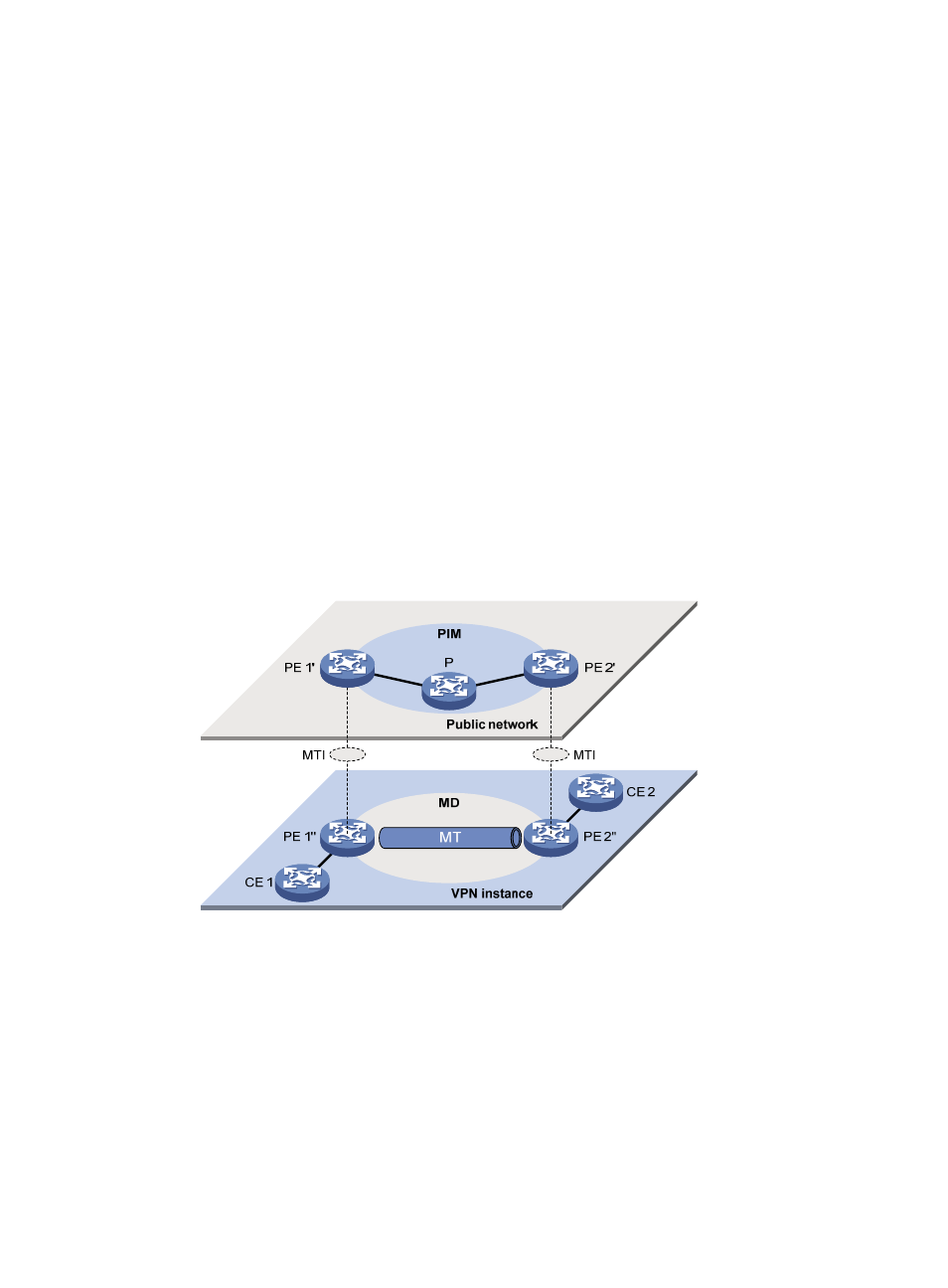H3C Technologies H3C S12500 Series Switches User Manual
Page 257

241
1.
The public network of the service provider supports multicast. The PE devices must support the
public network and multiple VPN instances. Each instance runs PIM independently. VPN multicast
traffic between the PE devices and the CE devices is transmitted on a per-VPN-instance basis, but
the public network multicast traffic between the PE devices and the P devices is transmitted through
the public network.
2.
Logically, an MD defines the transmission range of the multicast traffic of a specific VPN over the
public network. Physically, an MD identifies all the PE devices that support that VPN on the public
network. Different VPN instances correspond to different MDs. As shown in
, the ellipse
area in the center of each VPN instance plane represents an MD, which serves that particular VPN.
All the VPN multicast traffic in that VPN is transmitted within that MD.
3.
Inside an MD, all the private traffic is transmitted through the MT. The process of multicast traffic
transmission through an MT is as follows. The local PE device encapsulates the VPN data into a
public network packet, which is then forwarded on the public network. The remote PE device
de-encapsulates the packet to turn it back into a private packet.
4.
The local PE device sends out VPN data through the MTI, and the remote PE devices receive the
private data through the MTI. As shown in
, you can think of an MD as a private data
transmission pool, and you can think of an MTI as an entrance or exit of the pool. The local PE
device puts the private data into the transmission pool (the MD) through the entrance (MTI), and the
transmission pool automatically duplicates the private data and transmits the data to each exit
(MTI) of the transmission pool, so that any remote PE device that needs the data can get it from the
respective exit (MTI).
Figure 66 Relationship between PIM on the public network and an MD in a VPN instance
5.
Each VPN instance is assigned a unique share-group address. The VPN data is transparent to the
public network. A PE device encapsulates any VPN multicast packet within a normal public
network multicast packet, no matter what multicast group the VPN packet is destined for and
whether it is a protocol packet or a data packet. The PE device uses the share-group as the public
network multicast group for the packet. Then, the PE sends the public network multicast packet onto
the public network.
6.
A share-group corresponds to a unique MD. For each share-group, a unique share-MDT is
constructed through the public network resources for multicast data forwarding. All the VPN
multicast packets transmitted in this VPN are forwarded along this share-MDT, no matter at which
PE device they entered the public network.